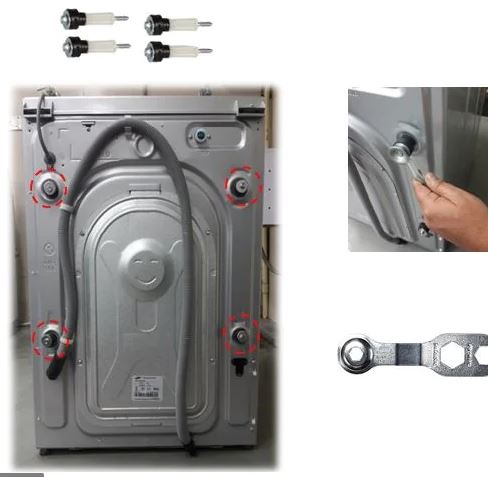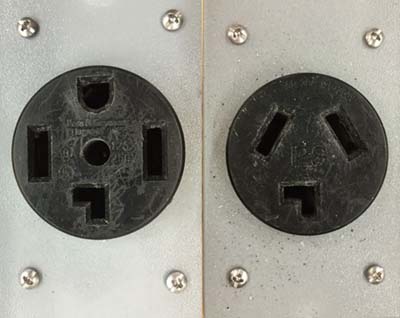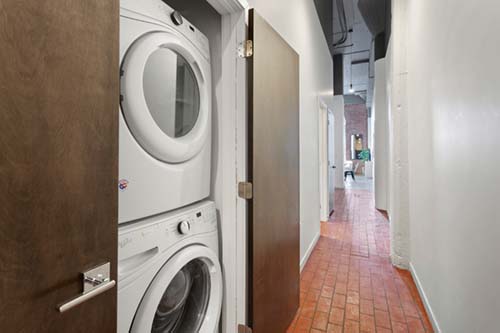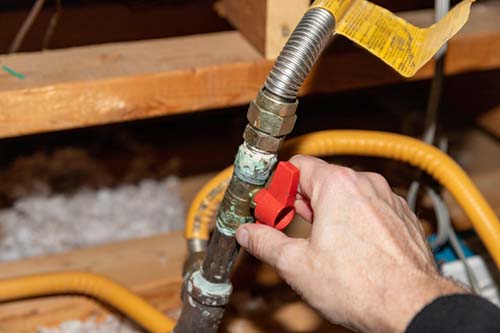Washer/Dryer Installation
Most of the time, your appliance retailer will deliver and install the washer and dryer. Certified typically gets involved if a gas hookup is required or if an outlet needs to be installed.
Your washer and dryer installation should take less than one hour. One technician can ususally complete the installation alone, but two techs are usually required for stackable units or units that have pedistals attached to them.
Your installer will remove your old appliances if necessary (most retailers charge extra for appliance removal) and then unpackage your washer and dryer.
They will move the appliances into place and level them using the adjustable feet at the bottom.
The washer will usually have shipping bolts in the back that need to be removed. See the shipping bolt section below for details.

How do I know if my appliances are installed correctly?
Below are a few things to consider with regard to installation:
- Do my washer and dryer turn on and operate normally? This seems obvious, but your unit should be able to operate normally. If clothes are not drying, you may have an obstruction in your vent or it may not have been hooked up correctly.
- Do my washer and dryer run smoothly? If a unit is not level it will shake excessively. Also, if the shipping bolts were not removed the unit may be able to function but no amount of leveling will cause it to stop shaking. See the shipping bolt section below.
- Do I smell gas? Your technician should hookup and test the gas dryer connection. If you smell gas, turn off your gas valve and call us immediately.
Other Considerations
Below are a few additional considerations with regard to your washer and dryer installation.
- Shipping Bolt Removal
- Power Requirements
- Space Requirements
- Gas Dryers
Shipping Bolt Removal
Shipping bolts are installed at the factory before shipping your washer. They are meant to stablize the drum to prevent damage to the unit while in transit.
Shipping bolt appearance and placement are slightly different on each model but this picture illustrates the approximate location. Your technician should remove the bolts and make sure your unit is operating correctly before leaving your home.
To remove the bolts, use a rachet or wrench. Untighten the bolts. The bolt will loosen but will not typically come completely out until you pull them out. After you unscrew the bolt, use channel locks or a similar tool to pull the shipping bolts straight out. Some bolts are easier than others to remove!

Power Requirements
Your electric dryer will require 220 volt power. There are two main plug configurations. One has three prongs and one has four prongs. Houses wired after 1996 will generally have four prong outlets and those prior to 1996 will usually have three prong outlets.
Your retail store will typically sell you the dryer cord. Its a good idea to see what kind of power outlet you have. That will allow you to purchase the correct plug type.
Your Certified installer will typically have extra cords in his van in case you were not able to purchase the cord from your retailer. These will typically be more expensive than if you buy them from your retailer when you purchase your appliance.


Space Requirements
One of the biggest challenges with washer and dryer installation has to do with space requirements. Sometimes people purchase stackable units without realizing how much space is required.
Before purchasing your washer and dryer, take a second to measure the space. You may need to take down shelving or make modifications in order to accomodate stackable washers and dryers. Make sure your closet height, width and depth can accomodate the unit you plan to purchase.
User manuals available online can give you the outer dimensions so you can buy with confidence.
Gas Dryers
Your technician will hook up and test the gas connection for leaks. Your gas line should have a valve to allow you to shut the gas off right at the dryer. If you do not have a gas valve or would like your installer to add one, you can request that at the time of installation for an additional charge.
Construction codes typically require that you have a gas valve in the same room as the appliance and no less than six feet from the unit. Reach out to your local contractor for specific information about gas line codes.
While your Certified installer can install a valve, he will not able to run a new gas line. A licensed plumber should be able to help you with new gas line installation.

